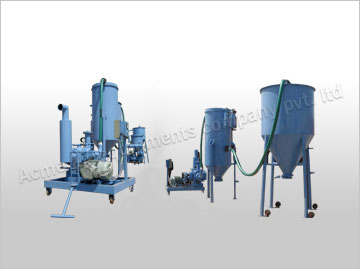Many manufacturing processes and shipping need goods to be transported and transferred from one place to another. Trucks, trains, vehicles, and aircraft are used for long distances, while automatic systems, buckets, grabs, screws, hydraulic systems, and pneumatic conveying systems are used for short distances. It should be remembered that the bulk handling industry is a major player all across the globe because it processes all of the goods that most other sectors manage. Above all, pneumatic conveying is critical since it transports bulk goods from point of origin to point of destination.
Pneumatic Conveyors at a Reduced Cost
Because of the following main factors, a strong pneumatic conveyor is very cost-effective for factories to use to manage and move materials:
- They are less expensive to build and maintain than other devices.
- They are fully sealed and, if necessary, can be worked without any working components interacting with the conveyed material.
- They are the most adaptable in terms of extension and rerouting, allowing them to move goods to either location with ease.

Advantages:
When we look at the main benefits that pneumatic conveyors have, we can see how important these devices are. Here they are:
- Simple Routing: As opposed to mechanical conveyors mounted in a factory, they help to simplify the routing of bulk materials movement routes. They are much easier to route than screw systems, which require precise implementation. Since the convey line is just a clear pipe and a little more, they normally need little floor space and can flow in both vertical and horizontal directions. They are extremely flexible in material routing.
- A Cleaner Method: Since mechanical conveyors primarily operate in straight lines, there may be multiple points of bulk material movement along the way. They simply remove several potential sources of spillage. With the exception of mechanical conveyors, which are made up of various conveyors and may cause spillage at each transfer point, a pneumatic conveyor is a sealed mechanism that protects both the workers and the atmosphere from hazardous spills. Furthermore, the sealed architecture helps in the avoidance of pollution in a range of products.
- Less Maintenance: Except perhaps mechanical systems, which must be carefully operated, these pneumatic transfer systems have fewer moving parts and less mechanical loss, requiring relatively little maintenance. They are highly good at operating at the highest rate.
Is pneumatic conveyance superior to mechanical conveyance?
There are some benefits of using a pneumatic conveying system over a mechanical conveying system. A pneumatic transfer system is a comparatively straightforward design that moves material through an insulated nozzle or pipe that can be routed through obstacles in the path between some of the source and collecting equipment. This configuration offers the versatility required to adapt the device into an internal procedure that can necessitate several lateral adjustments. This is also useful when space is limited.
When you consider that a pneumatic conveyor is a closed mechanism with few moving parts, you can see that this device is superior to mechanical transfer systems. However, before you get too excited about the pneumatic transition, there are few drawbacks and other facts to remember. Pneumatic transfer normally consumes more energy than a mechanical conveyor of comparable size. This requisite energy input will increase the system’s operating costs.
A pneumatic conveying mechanism often necessitates the use of a dust collector or air filter device. In certain situations, the substance being moved is too large in particle size, bulk mass, or is highly sticky, and could create a blockage in the transfer path of a pneumatic device. For these purposes, mechanical conveying systems can be preferable in certain cases.



